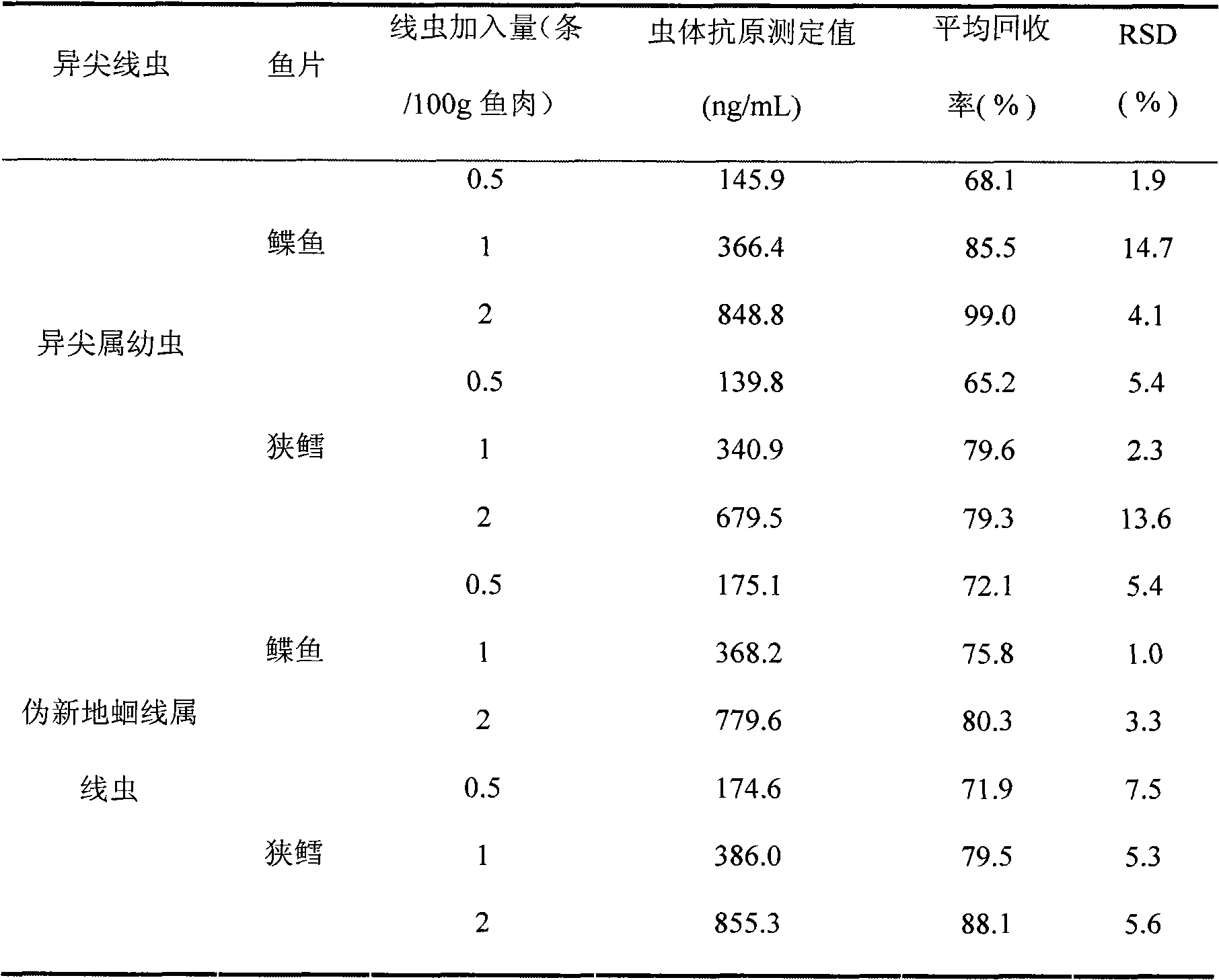Enzyme-linked immune-sorbent assay (ELISA) of anisakid larvae in seafood
Anisakis, a detection method technology, applied in the direction of measuring device, color/spectral characteristic measurement, instrument, etc., can solve the problems of long detection time, inaccurate characterization, cumbersome operation, etc., achieve high sensitivity and accuracy, and easy operation The effect of fast and shortened analysis time
- Summary
- Abstract
- Description
- Claims
- Application Information
AI Technical Summary
Problems solved by technology
Method used
Image
Examples
Embodiment 1
[0018] Example 1: Rapid detection of Anisakis in marine fish fillets
[0019] 1. Preparation of Anisakis worm antigen
[0020] Anisakis was isolated and collected from fish fillets by enzymatic digestion, and species identification was carried out by morphological observation. The isolated Anisakis body was washed with normal saline, placed in a glass homogenizer, and 0.01 Homogenize at 4°C after mol / L PBS, centrifuge at 9700g for 15min, and take the supernatant. Then add 1 / 2 volume of n-hexane to the supernatant to degrease. The extract was dialyzed against redistilled water overnight at 4°C, freeze-dried, and stored at -20°C.
[0021] 2. Preparation and purification of specific antibodies
[0022] Select 20 healthy female BALB / C mice aged 6-8 weeks, and carry out the immunization test by intraperitoneal injection, 0.3mg / mouse (calculated as protein), immunize once every 10 days, 5 consecutive immunizations, and the last immunization After 7 days, the eyeballs were remove...
PUM
 Login to view more
Login to view more Abstract
Description
Claims
Application Information
 Login to view more
Login to view more - R&D Engineer
- R&D Manager
- IP Professional
- Industry Leading Data Capabilities
- Powerful AI technology
- Patent DNA Extraction
Browse by: Latest US Patents, China's latest patents, Technical Efficacy Thesaurus, Application Domain, Technology Topic.
© 2024 PatSnap. All rights reserved.Legal|Privacy policy|Modern Slavery Act Transparency Statement|Sitemap

